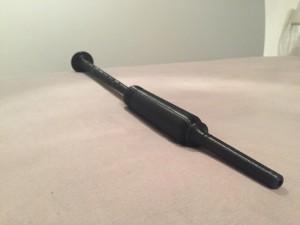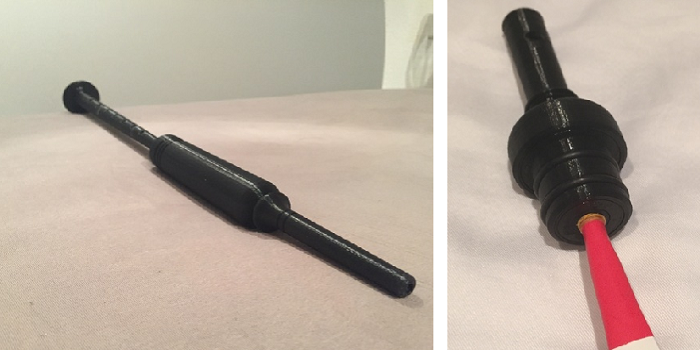
Many people when beginning to learn the bagpipe start by using something called a ‘chanter,’ which is a single component of the bagpipe roughly the shape and size of a soprano recorder. In addition, for those already skilled pipers, a practice chanter can allow for a less exhausting practice and the ability to transport the instrument easily when necessary.
“The first thing I did was to use SolidWorks draw the whole chanter how I liked it with the distances between the holes marked out. The maximum height my 3D printer can print is 150mm and because of that I split the chanter into five different pieces. After printing, I glued the two main parts together and stabilized it with O-rings. I printed four versions before I had the desired result. The problems were mostly over-hangs and the small areas of the first layer, so I had to adapt something each time.”
“Surprisingly, the chanter I made sounded really great and so I started to always practice on it,” Beer told us. “After I finally had a 3D printer, I wanted to see if it would be possible to print another practice chanter that also sounded great. It was also important to me to create one in such a way that it was easy to print for anybody who wants to play the bagpipes.”
The time may have finally come for the maker movement to have an official musical instrument and I think I’d cast my vote in favor of Beer’s 3D printed chanter. Would you? Fill us in on your thoughts in the 3D Printed Practice Bagpipe Chanter forum thread over at 3DPB.com. Listen to it in action in the video below.
